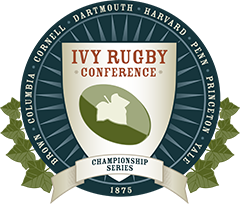The Ivy League
The Ivy League is the name generally applied to the group of schools including Brown, Columbia, Cornell, Dartmouth, Harvard, Pennsylvania, Princeton, and Yale that over the years have had common interests in scholarship as well as in athletics. Stanley Woodward, New York Herald Tribune sports writer, first used the phrase "Ivy colleges" in October of '33. Then in February of '35, AP Sports editor Alan Gould first used the exact term "Ivy League".
1936 Campus Newspapers Call for the Ivy League
In 1936 the undergraduate campus newspapers of the eight Ivy universities simultaneously ran an editorial advocating the formation of an "Ivy League." The first official move wasn't taken until nine years later. In '45, the eight presidents entered into an agreement "for the purpose of reaffirming their intention of continuing intercollegiate football in such a way as to maintain the values of the game, while keeping it in fitting proportion to the main purposes of academic life." To achieve this objective two inter-university committees were appointed: one, made up primarily of the college deans, was to administer rules of eligibility; the other, composed of the athletic directors, was to establish policies on the length of the playing season and of preseason practice, operating budgets, and related matters. Two other inter-university committees on admission and financial aid were added later. As Princeton University President Harold Dodds pointed out at the time, the general principles agreed on by the eight universities were essentially the same as those set forth in the Harvard-Yale-Princeton Presidents' Agreement of 1916.
1952 Full League Competition
The first step toward organizing full league competition came in 1952 with the announcement that, beginning with the fall of 1953, each college would play every other college in the group at least once every five years. This plan was superseded in 1954 when the presidents announced the adoption of a yearly round-robin schedule in football, starting in 1956, and approved the principle of similar schedules in "as many sports as practicable.'' Thereafter, the Ivy Group (as the league was called in the Presidents' Agreement of 1954) established schedules in other sports, including some in existing leagues with non-Ivy members.
The Ivy League Today
Today, The Ivy League is the most diverse intercollegiate conference in the country with over 8,000 athletes competing each year. Sponsoring conference championships in 33 men's and women's sports, and averaging more than 35 varsity teams at each school, The Ivy League provides intercollegiate athletic opportunities for more men and women than any other conference in the country. All eight Ivy schools are among the top 20 of NCAA Division I schools in number of sports offered for both men and women.
Ivy League Rugby Tournament
Since 1969, teams of the eight Ivy League universities competed in the Ivy League Rugby Championship tournament. The records are sparce, but it is believed that the first 24 events were held at Brown in Providence. The 41st annual 2009 event, dominated by Dartmouth, was the last in the 41 year series.
The records are also sparce for the women's events but championships have been held in the last 20 years. Lately the tournament has been dominated by Brown University.
Ivy Rugby Conference
In the fall of 2009, the Ivy Rugby Conference was formed and all eight men's Ivy teams competed in full matches against the other seven teams in the league. Dartmouth has won each year since the inception of the league including 2009, 2010 and 2011.
Other Ivy Championships
Five Ivy schools must have a varsity program in a sport before the Ivy League will sponsor a conference championship. Ivy championships in non-Ivy League sponsored sports include Water Polo,
Water Polo with 3 schools with varsity programs including Princeton, Brown. and Harvard
Bushnell Cup
Since 1971, the Bushnell Cup has been awarded to the Ivy football player of the year, who is selected by vote of the eight coaches. This trophy, presented to the Ivy League by the Eastern Association of Intercollegiate Football Officials, was named in honor of Asa S. Bushnell '21, the first commissioner of the Eastern College Athletic Conference, in appreciation of "his great contribution to the advancement of college athletics.''
Council of Ivy League Presidents
In 1973, to provide greater coordination of the athletic interests of the eight universities, the post of executive director of the Council of Ivy League Presidents was created, and Ricardo A. Mestres Princeton '31, financial vice-president and treasurer of Princeton University, emeritus, was elected first incumbent. Mestres served in this post until 1976, when he was succeeded by James M. Litvack, visiting lecturer in economics and public affairs at Princeton University. Jeff Orleans served as Executive Director of the Council of Ivy Group Presidents and Commissioner of the Ivy League from 1984 to 2009. The present executive director Robin Harris has served the post since 2009.
